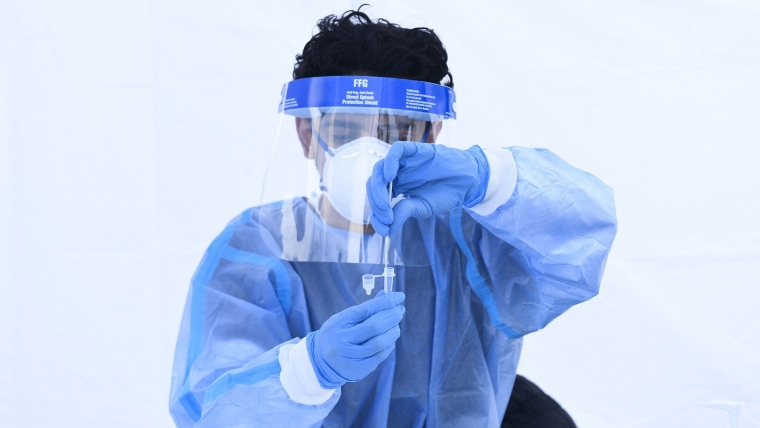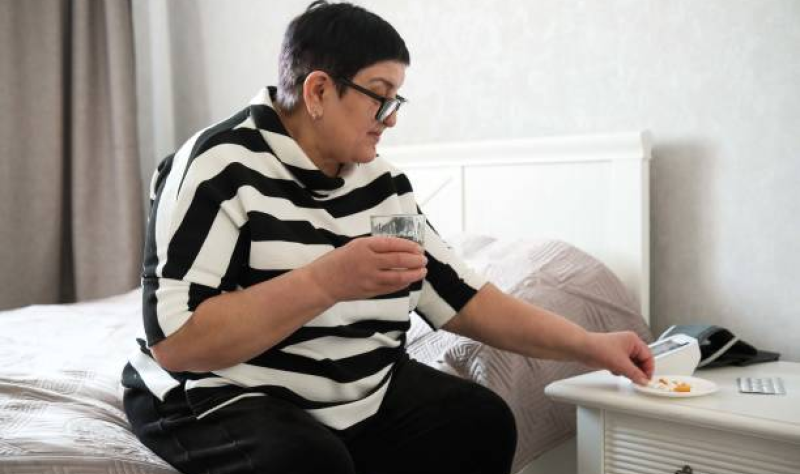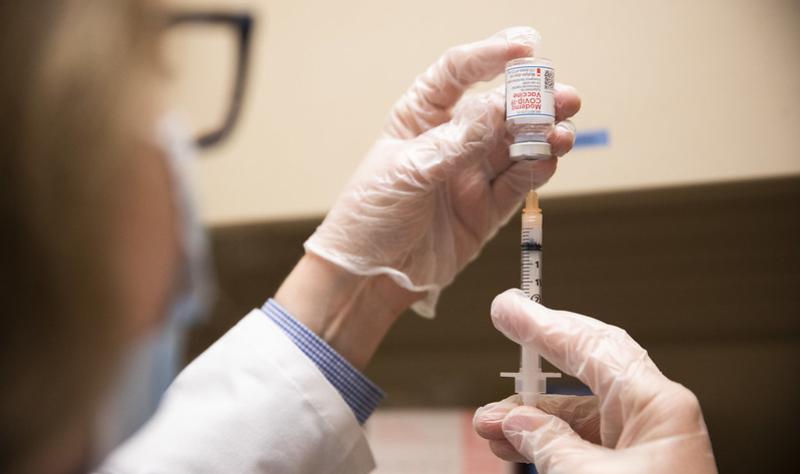Is A Faint Line On COVID-19 Test Actually Positive? Experts Explain How To Interpret Results

A few weeks ago, after more than two years of evading COVID-19, I tested positive on a home rapid test. The line was barely there — so faint that it didn’t even show up in photos. Was I tricking myself? Unfortunately, no. The much more obviously positive test I took the next day confirmed that I had COVID-19.
The whole experience also got me thinking about what the line actually means and whether a darker or lighter positive line on a COVID-19 test can tell you anything about your individual infection.
What does the line on a COVID-19 actually measure?
At its most literal level, the positive line on an at-home rapid test “is showing the presence of targeted viral proteins,” Omai Garner, Ph.D., associate clinical professor and director of clinical microbiology at UCLA Health, told TODAY.
“It’s looking for a particular part of the virus that attaches to components of the test that are attached to a color,” Dr. Emily Volk, President of the College of American Pathologists, told TODAY.
From there, the proteins “get caught on that line and show a color band,” Dr. Amy Mathers, associate professor of medicine and pathology and associate director of clinical microbiology at the University of Virginia School of Medicine, told TODAY.
If that positive line shows up, it’s very likely that you have coronavirus proteins in your nose — and that you have COVID-19.
Does a faint line count as a positive result?
Yes, the experts said.
“It’s not a super-sensitive test, meaning you’ve got to have a good amount of virus there just to get the home antigen test to work at all,” Garner said. Keeping that in mind, “any line early in the infectious process implies that somebody is very contagious.”
But that doesn’t mean it’s always easy to read. “Sometimes it’s not quite a line; it can be like a fuzz,” Mathers said. “But if you see a line there, it’s there.”
It can also help to take in the context of what’s going on around you. If COVID-19 transmission levels are high in your area (as they are in much of the country right now), if you know you were exposed to someone with the infection or if you have noticeable symptoms, those are all good reasons to interpret a maybe-positive as a definitely-positive.
“Especially with the amount of COVID that’s circulating, it should be considered positive until proven otherwise,” Mathers said.
If you want to confirm the result, you can take another rapid test a day or two later. If your second test is also quite faint or you don’t have a line at all, that’s a good time to go get a PCR test to see what’s really going on, Garner said. Both Volk and Mathers suggest that people who aren’t sure of their results skip the second rapid test and go straight to their doctor or a PCR test.
The only situation in which you wouldn’t assume that a faint line on a rapid test is positive is if it turned positive after the allotted testing period, Garner said. “If you just left the test for two hours, you can have some false positive binding,” he explained. “But if the test is performed correctly, any line — no matter how faint — is a true positive.”
Does it matter if the line on your COVID-19 test is super dark?
In theory, “the more viral proteins that are there, the darker the line would be,” Garner said. And, from there, you might conclude that you’re more or less contagious or that you might have a milder or more severe infection depending on how dark or faint your line is.
But these tests weren’t really designed to measure any of that, the experts said. “These antigen tests are qualitative, so they’re not designed to give you an estimate of, ‘Is there a lot of virus or is there a little virus?’” Volk explained.
They’re really just meant to be read as a binary: positive or negative.
“We have some of these tests in our lab that we run as medical tests, and we do not interpret the strength of the (line) at all,” Mathers added. Plus, there are a bunch of other reasons a test line might be darker or lighter that don’t have anything to do with the actual amount of viral particles in your body, she said.
For instance, the consistency of your snot may affect how many of those viral proteins collect in your nose. “So you might have a load of viral antigen in your nose,” but that may not be an accurate reflection of how much virus is actually circulating in your system because your mucus is just extra thick, Mathers explained. (Snot, like saliva, can be thicker or thinner depending on how hydrated you are, she said.)
Additionally, the pH of your nasal ecosystem “could change how well the virus binds,” she said. “All of those variables in human specimens can alter the way the test may read.”
The room temperature when you’re running the test as well as how well the tests are stored can also affect the results, as TODAY explained previously.
We know that early on in the infection, people can be very contagious and have a lighter line on their rapid antigen test — or not test positive at all. They may even have symptoms for a few days before turning positive. “People can have bad COVID infections and a faint line, and people can have mild COVID infections and a really deep red line,” Volk said.
With the convenience and availability of rapid tests, it’s understandable that people will want to use them in ways they aren’t necessarily intended, Garner said. “People are trying to use the antigen tests not only to assist in the diagnosis of disease but also to assist in their behavior after they’ve been infected.” That’s especially true in those tricky situations where people may be pressured to get back to work ASAP or have to make tough decisions about partaking in other activities — even if they’re still testing positive, he said.
But you should not use the lightness or darkness of the line on your test to direct your behavior because the tests are simply not designed or FDA-authorized for that, Volk and Mathers agreed.
If your line is lighter, for instance, that doesn’t mean you can ignore other precautions, like masking. “There’s really no actionable information to be gained (from looking at whether your line is lighter or darker),” Volk explained. If it’s positive, it’s positive — and you can probably leave it at that.
Related:



